This house in Singapore is a tropical oasis filled with plenty of light and greenery
This house has many features that promote passive sustainable living, including a naturally ventilated internal garden, a ‘hanging’ study room and two different kinds of screens.
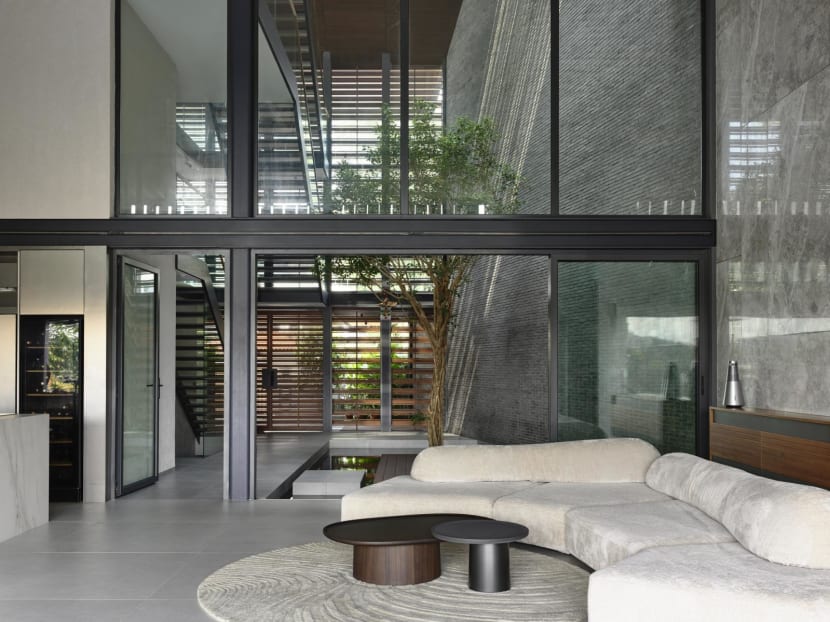
The living room is buffered from the street by the atrium. (Photo: Derek Swalwell)
With the entire front facade covered by a wall of Chengai timber screens, one would not expect to find an oasis filled with water, light and greenery behind this shield.
The house is conceptualised by HYLA Architects, who is known for designing tropically attuned houses. The existing house was an unassuming structure with a terracotta tiled roof and dated beige stone-cladded walls. The owner, who lives here with his wife and three teenage children, wanted a home with spaces large enough to entertain about 20 people at a time. He was also concerned about the west-facing rear, where the afternoon sun would bring in uncomfortable heat and glare.
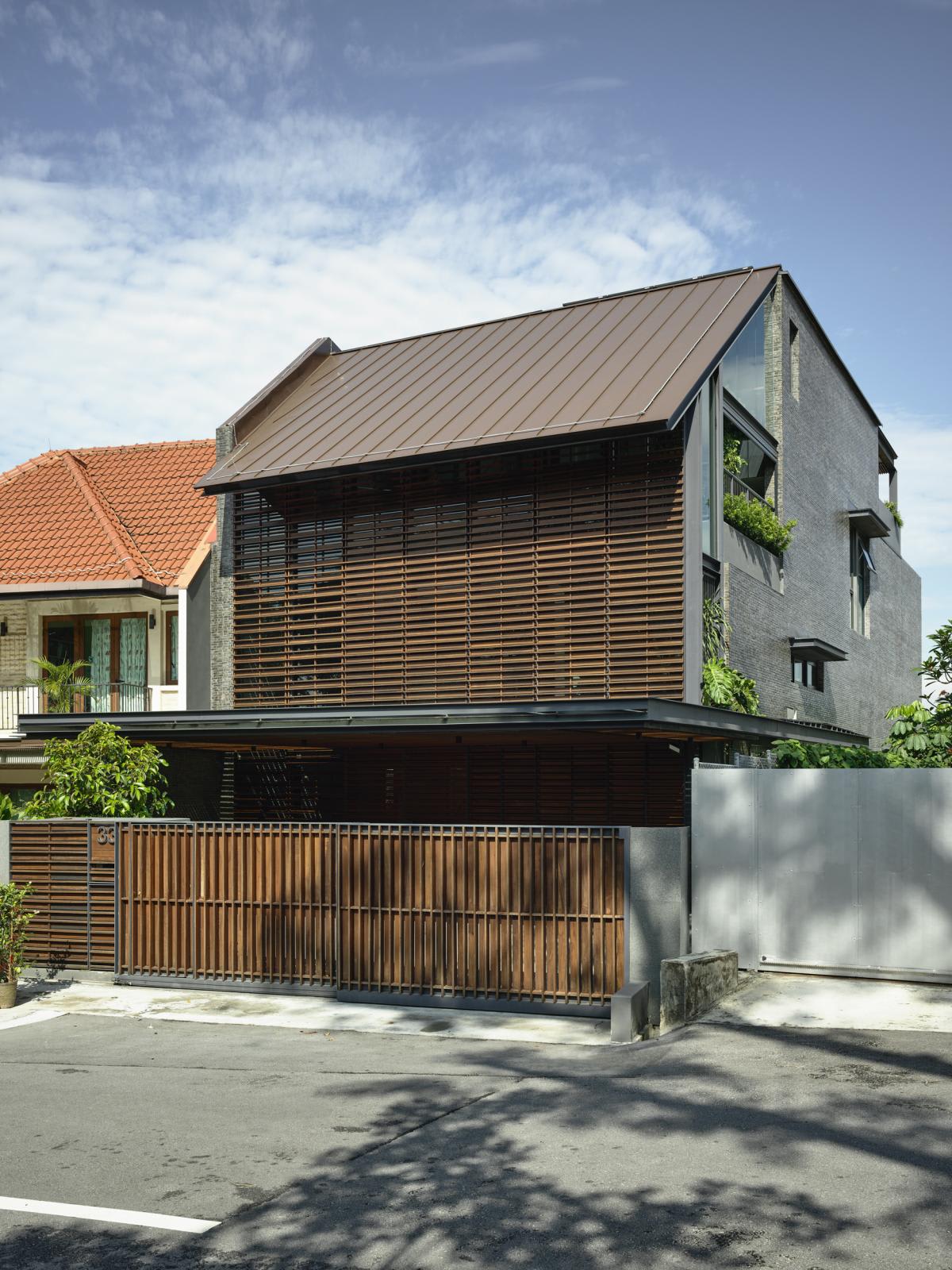
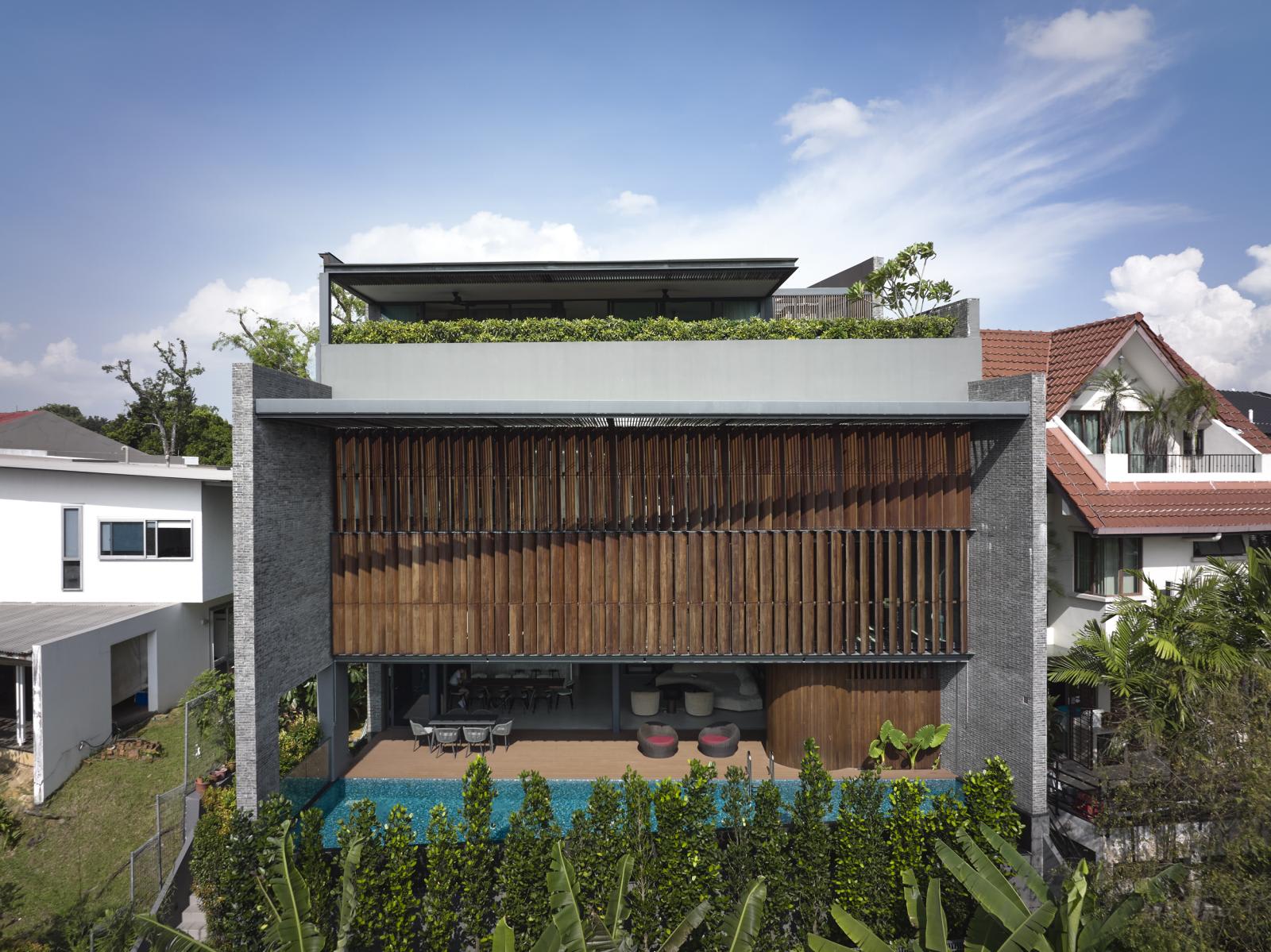
With a better vista at the back of the house that is located on elevated ground, the design team, led by the firm’s founder and architect Han Loke Kwang, positioned the main gathering areas here. They are surrounded by a terrace and pool, which encourages outdoor living and frames the picturesque view. The shape of the land tapers from being narrower at the front to wider at the rear, which makes the placement of the living and dining areas at the back a good idea, as it allows for more spacious gathering spaces and gives the panoramic view more frontage.
Han placed the study room above the large deck. Used by everyone in the household, it functions as deep overhang that gives shade to the double-storey living and dining rooms. These spaces on the first floor and the study on the mezzanine above are connected through full-height sliding glass doors. “One interesting fact is that the floors above the terrace are supported by a hanging structure, doing away with the need for columns at the pool’s edge,” Han pointed out. It is suspended from the floor above using a pair of deep beams that rise up to become planters from the master bedroom’s veranda.
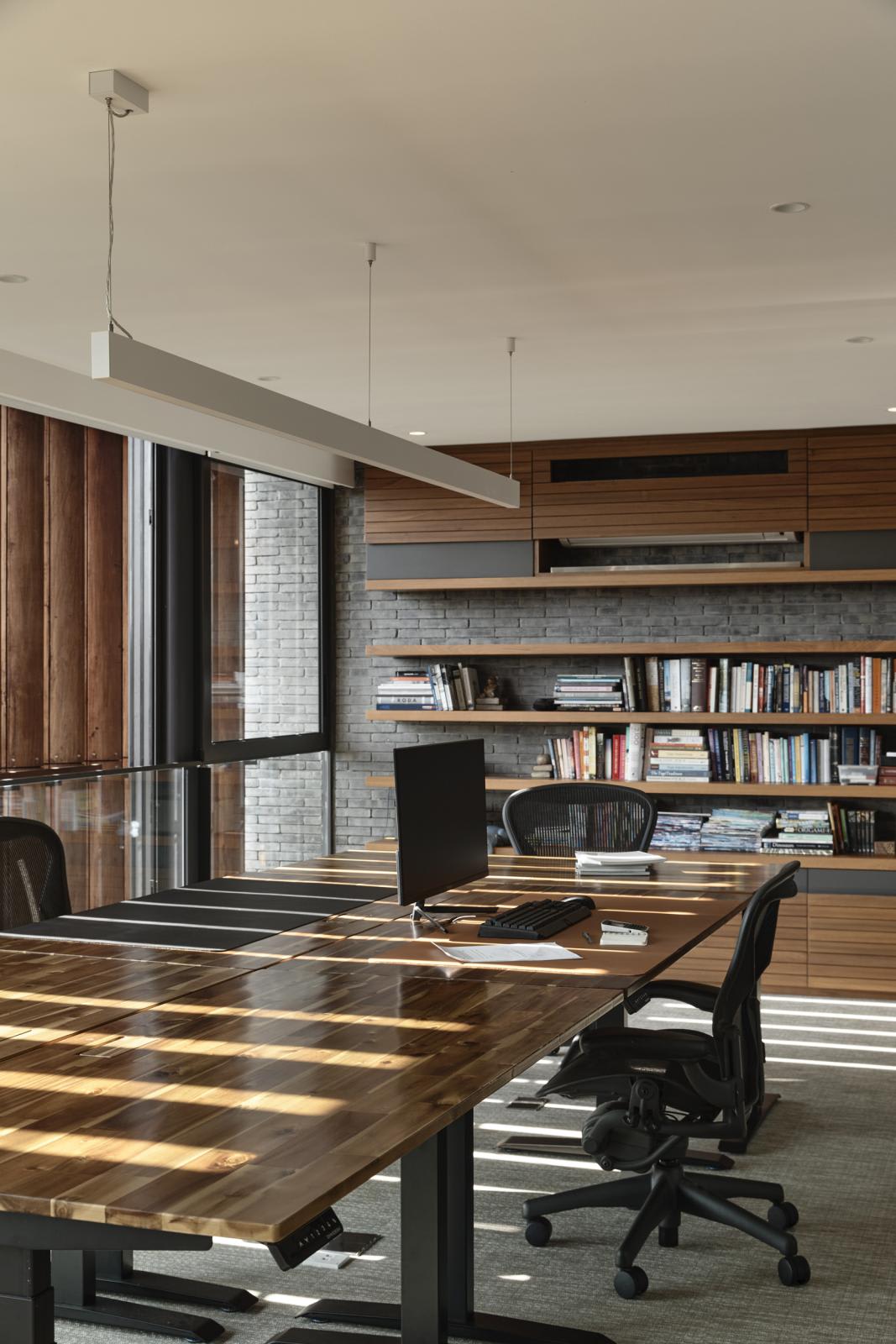
At the back of the house, timber louvres screen the study room and bedrooms. Compared to the louvres at the front of the house designed to cut out the late morning sun, these screens are vertical and rotatable. “This is better for the western sun. By making it rotatable, you can completely cut off the western sun at all times of the year. It also allows for views out at other times of the day and at night, overlooking the neighbourhood,” Han highlighted. The master bedroom right at the top is sheltered with a roof where the extended leaves ensure the interior is always cool. The house is designed to support passive sustainability, where natural airflow is encouraged without the use of appliances. At the front of the house after the entrance and behind the screens is a generous forecourt that buffers the main living areas from the street. There is a koi pond here – a request from the owner – where a tall tree grows from a planter to reach 11.5m up the three floors. Filtered light washes in from the trellised skylight above as well as the front elevation of screens. Upon entry, this private garden makes one immediately forget the outside world, while from the interior the family can enjoy a piece of nature without worrying about prying neighbours.
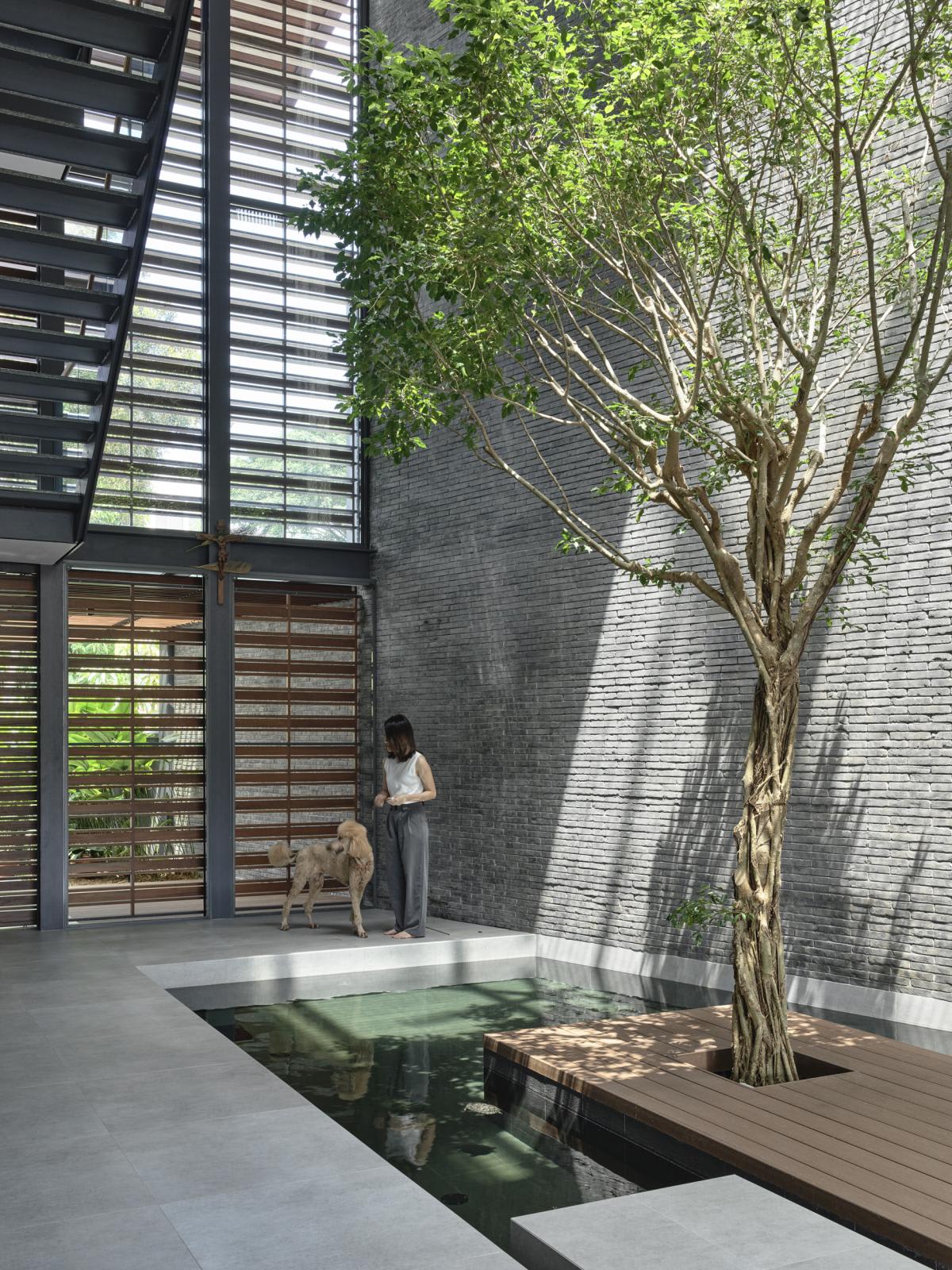
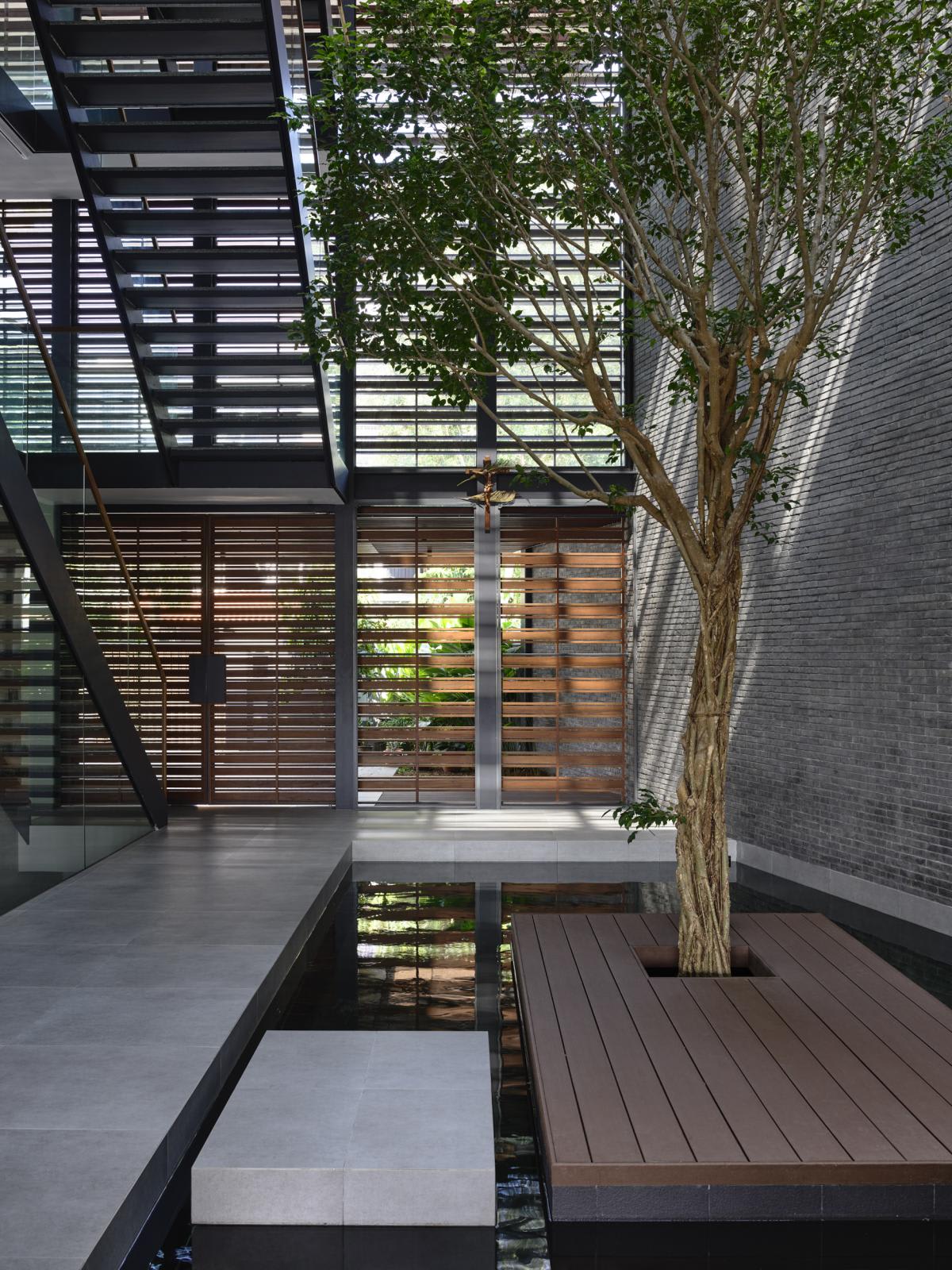
“This covered courtyard illustrates the idea of ‘outside in’, which is the name we gave the house. It is covered but permanently ventilated with openings at the front facing the car porch, the sides and at the very top. It is like being outside but without the rain and with privacy. The idea is to make it like an internal private garden,” explained Han. The study room at the other end of the house also enjoys the view of the atrium through double-storey glass windows at the living room.
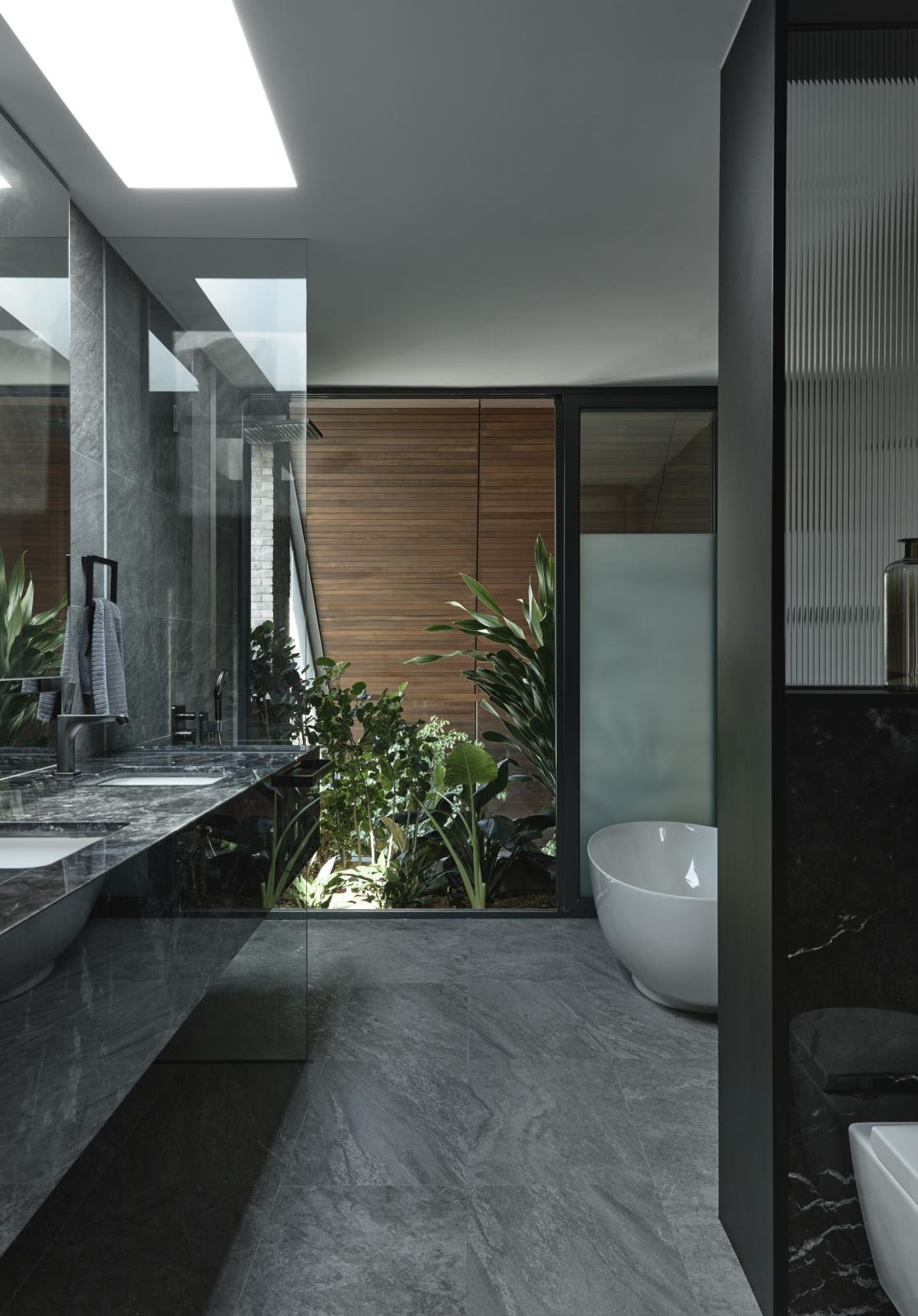
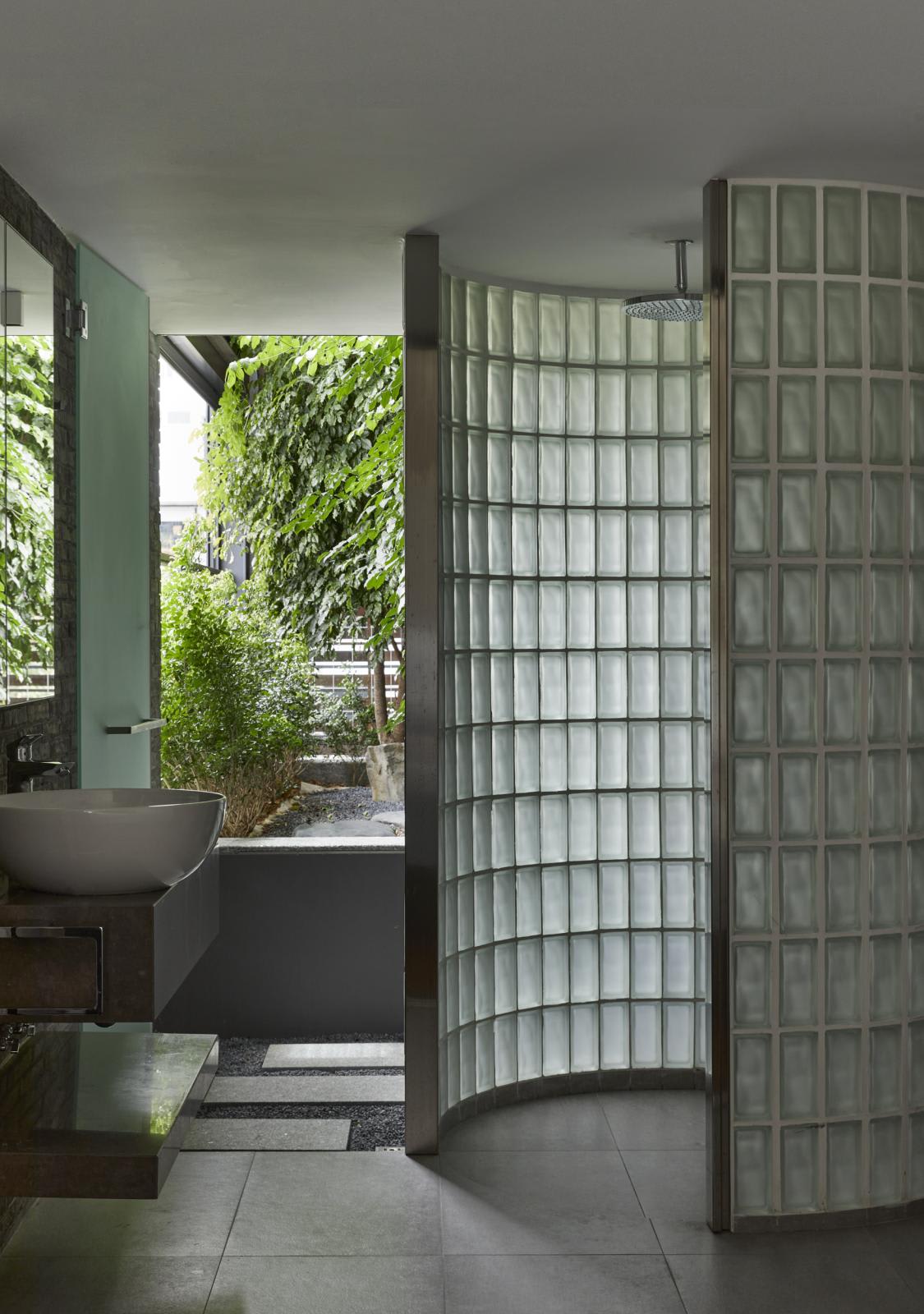
The ‘outside in’ idea is accentuated by the grey brick walls that are used to form the two party walls. They are exposed on the internal walls of the main living areas and the atrium. The rest of the building’s subtle palette of greys and whites becomes a backdrop for these textures and the ample greenery to stand out.
“The house promotes the idea that you can have a very comfortable, liveable space without using air-conditioning. With passive solar design, one can modulate the temperature and environment. This is the best way for sustainable living as air-conditioning is the biggest user of electricity. An alternative solution is the HVLS (high volume, low speed) fans that help improve air circulation,” said Han. Air-conditioning is however provided for times of extremely hot weather, though it is not used on regular days. Another eco-friendly feature is the solar panels on the rooftop.
The staircase, placed at the side of the pond, rises up three storeys along the atrium. Circulating up and down the house, the family members are always privy to a sense of time and place, to the intricate shifts of weather and to familial happenings through the bedroom windows that look into the atrium from across the pond. Planters carefully positioned alongside the staircase landings continue the experience of greenery upward.
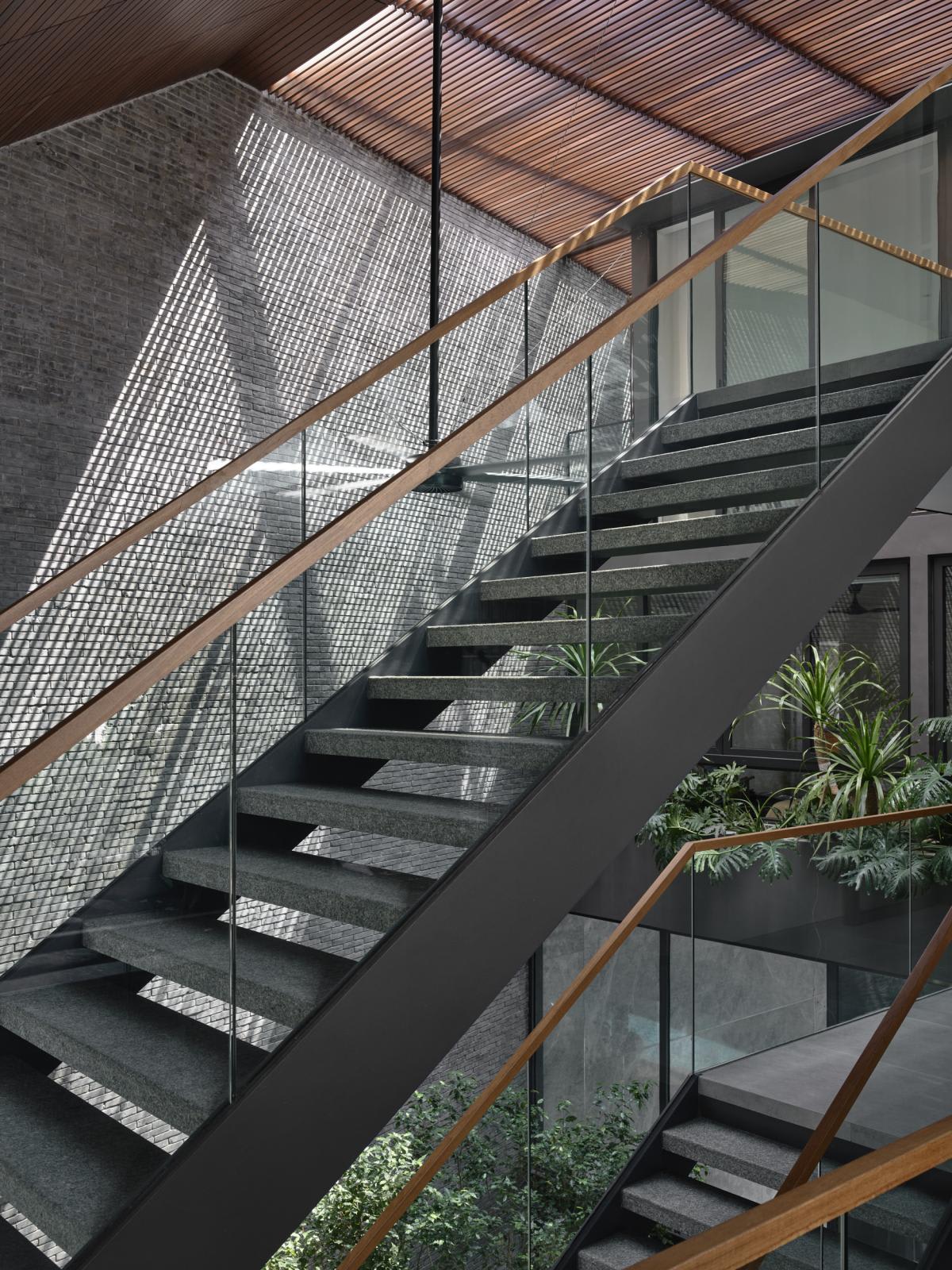
The lift is also located here so that upon entry, the family can go directly upstairs without traversing through the gathering spaces on the lower floors. This helps to segregate private and public zones when there are guests.
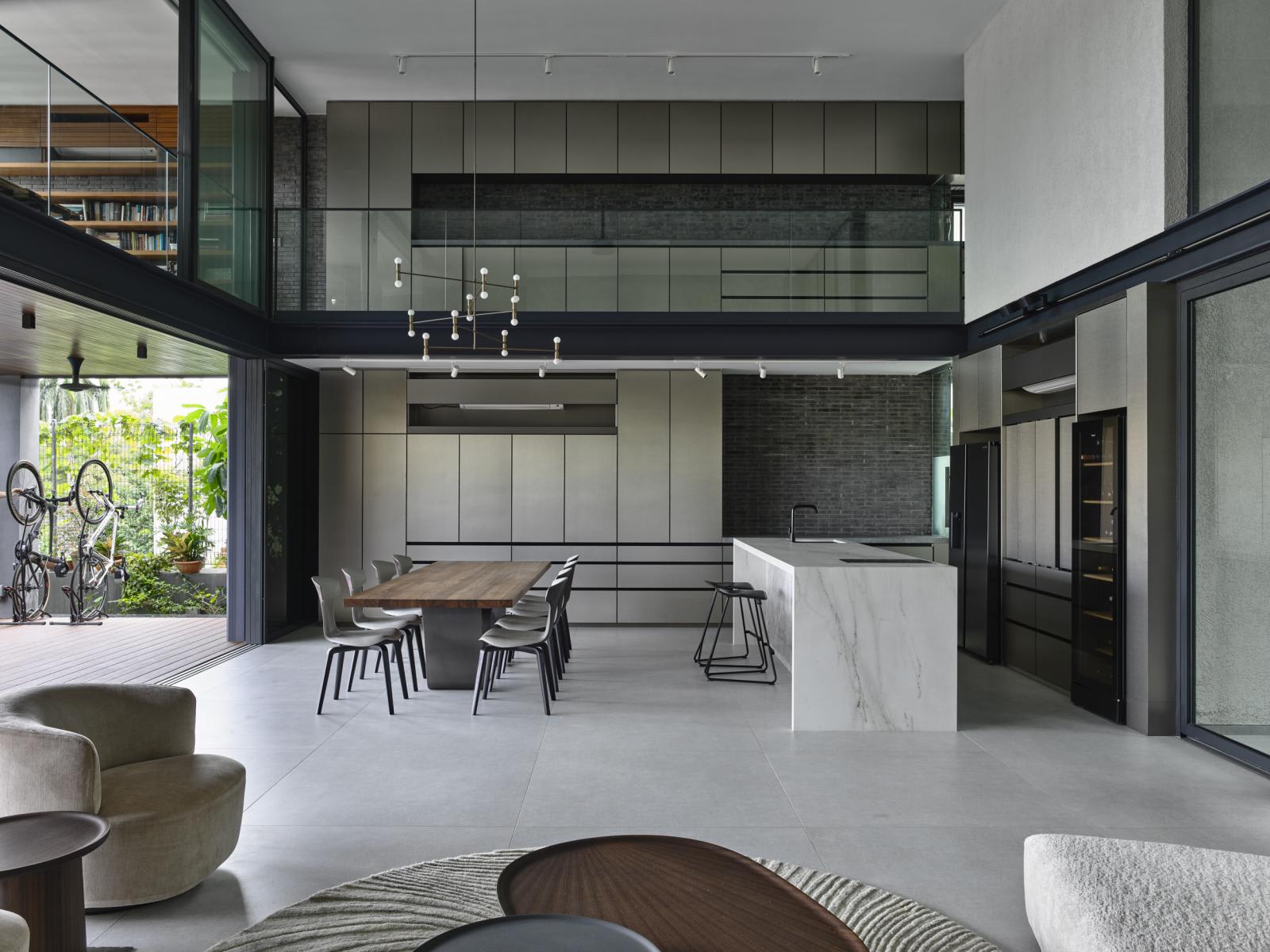
“Its location at the atrium makes the staircase an important part of the architecture. For that reason, we kept the design simple and minimal with steel stringers in a straight flight. One thing that is unique is the use of granite for the treads instead of the usual timber to emphasise the external nature of the environment it is in,” said Han.
The house also features a series of interestingly designed bathrooms. The powder room at the pool deck is contained in a circular enclosure, where the timber walls harmonises with the timber-clad deck and ceiling clad. On the second storey, a planter preludes the sequence into the guest bathroom and stepping-stones take one into well-lit space with curved walls made of glass bricks hugging the shower area. In the master bathroom, a skylight illuminates the space and a small garden brings a touch of the outdoors in. This patch of green is shared with the lift landing so that one encounters some landscaping when arriving from the floor below.
The wife also requested for a yoga room, which is placed on the mezzanine level next to the staircase. A small sliver of garden provides a contemplative view for exercise sessions, lit by filtered light from the front façade. Landscaping is experienced throughout the house – not just as grand features like in the atrium garden, but also woven into the circulation through the home and at small corners.
During a visit, the home felt cool and shady, despite the sweltering heat and glare of the afternoon sun outside. The juxtaposing of intimate and tall spaces, of extended sightlines to many pleasant green views truly blurs the boundaries between inside and outside, making this a fine case study for tropical living.











